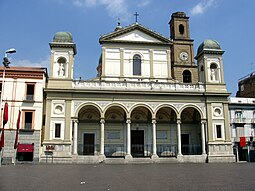
The Archdiocese of Capua is a Latin diocese of the Catholic Church in Capua, in Campania, Italy, but its archbishop no longer holds metropolitan rank and has no ecclesiastical province. Since 1979, it is a suffragan of the Archdiocese of Napoli, i.e. no longer has its own ecclesiastical province nor metropolitan status.
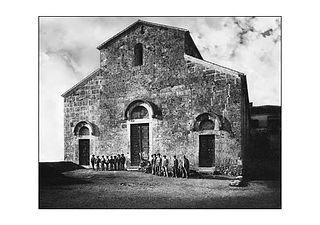
The Roman Catholic Diocese of Ferentino existed until 1986, when it was united into the new diocese of Frosinone-Veroli-Ferentino.

The Archdiocese of Reggio Calabria-Bova is a Latin Church ecclesiastical territory or diocese of the Catholic Church in Calabria, southern Italy. It received its current title in 1986, when the independent Diocese of Bova was suppressed, and the territory and title of the diocese added to that of the Archdiocese of Reggio.
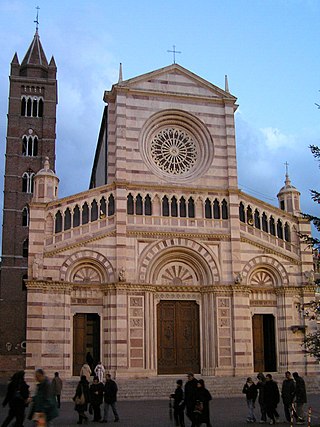
The Diocese of Grosseto is a Latin Church diocese of the Catholic Church in Italy, a suffragan of the archdiocese of Siena-Colle di Val d'Elsa-Montalcino, in Tuscany. Its current bishop is Giovanni Roncari, OFMCap.

The Diocese of Bovino is a Latin Church diocese of the Catholic Church in the civil province of Apulia, southern Italy. It is 23 mi (37 km) southwest of Foggia. It was established in the tenth century, and was a suffragan of the archdiocese of Benevento. In 1986 it was merged into the Archdiocese of Foggia-Bovino. In 1980, the diocese claimed 23,500 adherents, served by 26 priests.

The Italian Catholic diocese of Todi existed until 1986, when it was united into the diocese of Orvieto-Todi. Up until that point, the diocese had always been directly dependent on the Holy See.
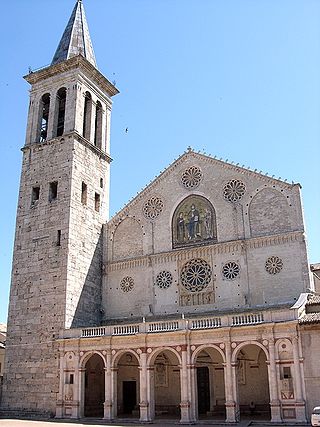
The Archdiocese of Spoleto-Norcia is a Latin Church ecclesiastical territory or archdiocese of the Catholic Church in Italy. Historically, it was the Diocese of Spoleto. Elevated to the status of an archdiocese since 1821, it is a non-metropolitan see and is immediately exempt to the Holy See.

The Diocese of Arezzo-Cortona-Sansepolcro is a Latin diocese of the Catholic Church. It has existed since 1986. In that year the historic diocese of Arezzo was combined with the diocese of Cortona and the diocese of Sansepolcro, the enlarged diocese being suffragan of the archdiocese of Florence.
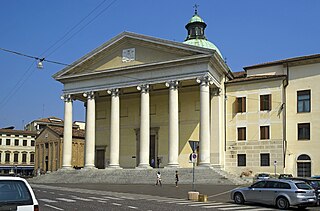
The Diocese of Treviso is Latin Church ecclesiastical territory or diocese of the Catholic Church in the Veneto, Italy. It is a suffragan diocese in the ecclesiastical province of the metropolitan Patriarchate of Venice.
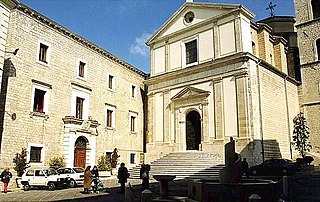
The Archdiocese of Potenza-Muro Lucano-Marsico Nuovo is a Latin diocese of the Catholic Church in Basilicata, southern Italy, created in 1986. In that year the Diocese of Muro Lucano was united into the Archdiocese of Potenza e Marsico Nuovo, which had been elevated to an archdiocese in 1973, and made a metropolitan see in 1976. The historical Diocese of Potenza was united with the Diocese of Marsico Nuovo in 1818.

The diocese of Teano-Calvi is a Latin diocese of the Catholic Church in Campania, southern Italy, created in 1986. It is a suffragan of the Archdiocese of Naples. The historic Diocese of Teano and diocese of Calvi Risorta were united in 1818, forming the diocese of Calvi e Teano.

The Diocese of San Severo is a Latin diocese of the Catholic Church in Apulia. It is a suffragan of the Archdiocese of Foggia-Bovino.
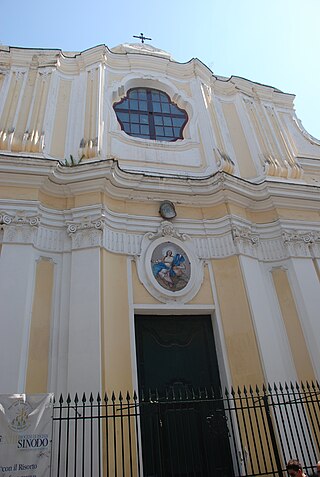
The Diocese of Ischia is a Latin diocese of the Catholic Church in Campania, southern Italy. It is a suffragan of the Archdiocese of Naples. The diocese comprises the entire island of Ischia, which contains seven communes divided into two circumscriptions. In 1743, the population was about 4,000. The city of Ischia constituted one single parish, with two religious houses of men and one of women. In 2018, the population of the town of Ischia was 20,118.

The Diocese of Pozzuoli is a Latin diocese of the Catholic Church in Campania, southern Italy. It is a suffragan of the Metropolitan Roman Catholic Archdiocese of Naples, like its other neighboring dioceses, Aversa and Ischia.
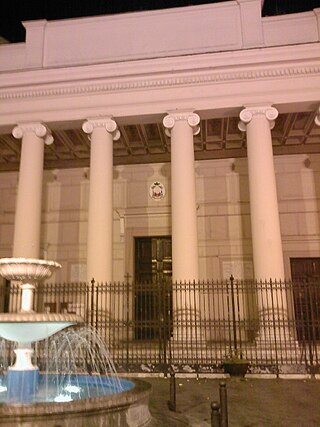
The Diocese of Acerra is a Latin diocese of the Catholic Church in Campania, southern Italy, eight miles east of Naples, in the area once called Terra Laboris (Liburia). It has existed since the 11th century. It is a suffragan of the Archdiocese of Naples.

The Diocese of Sessa Aurunca is a Latin diocese of the Catholic Church in southern Italy. Since 1979 it has been a suffragan of the Archdiocese of Naples.

The Diocese of Anagni-Alatri is a Latin Church ecclesiastical territory or diocese of the Catholic Church in Lazio, Italy. It has existed in its current form since 1986. In that year the Diocese of Alatri was united to the historical Diocese of Anagni. The diocese is immediately exempt to the Holy See.
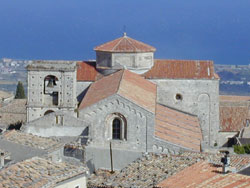
The Diocese of Locri-Gerace is a Latin diocese of the Catholic Church in Calabria. It is a suffragan of the Archdiocese of Reggio Calabria-Bova.
The Italian Catholic diocese of Lacedonia, a suffragan of the archdiocese of Benevento in Campania, existed until 1986 when incorporated into the reorganized Roman Catholic Diocese of Ariano Irpino-Lacedonia.

The Diocese of Bisceglie was a Roman Catholic diocese located in the town of Bisceglie on the Adriatic Sea in the province of Barletta-Andria-Trani, Apulia in southern Italy. It is five miles south of Trani.
